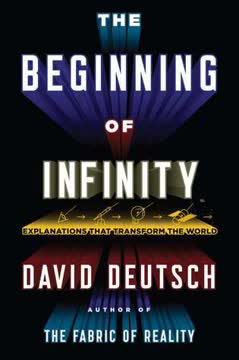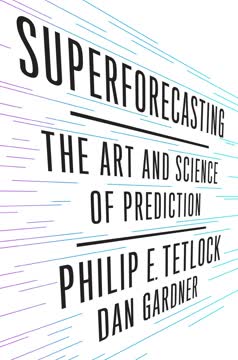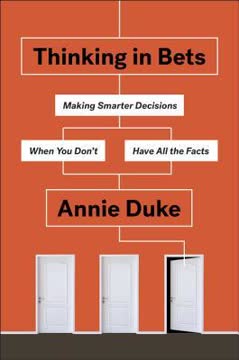Key Takeaways
1. Embrace antifragility: Gain from disorder and volatility
"Antifragility is beyond resilience or robustness. The resilient resists shocks and stays the same; the antifragile gets better."
Antifragility defined. Antifragility is the property of systems that benefit from stress, volatility, and disorder. Unlike fragile systems that break under pressure or merely robust systems that withstand stress, antifragile systems actually improve and grow stronger when exposed to volatility.
Examples and applications:
- Biological systems: Muscles grow stronger with stress from exercise
- Economic systems: Entrepreneurs and innovators thrive on market volatility
- Knowledge: Trial and error leads to discoveries and technological progress
Key principle: Embrace controlled doses of randomness and stress in various aspects of life to become antifragile and harness the potential for growth and improvement.
2. Avoid iatrogenics: Recognize when intervention causes harm
"In medicine we are learning that perhaps one-quarter of all medical interventions are unnecessary and even harmful."
Iatrogenics explained. Iatrogenics refers to harm caused by intervention, particularly in complex systems where the full consequences of actions are difficult to predict. This concept applies not only to medicine but to various fields including economics, politics, and personal decision-making.
Examples of iatrogenic harm:
- Overmedication leading to side effects worse than the original condition
- Economic policies aimed at stability causing larger, less frequent crashes
- Overprotective parenting hindering children's natural development
Mitigation strategy: Adopt a "less is more" approach, intervening only when absolutely necessary and with full awareness of potential unintended consequences. Embrace the body's natural healing abilities and the self-correcting nature of many systems.
3. Apply the barbell strategy: Combine extremes for optimal results
"I initially used the image of the barbell to describe a dual attitude of playing it safe in some areas (robust to negative Black Swans) and taking a lot of small risks in others (open to positive Black Swans), hence achieving antifragility."
Barbell strategy explained. The barbell strategy involves combining two extremes while avoiding the middle. This approach allows for both protection against downside risks and exposure to potential upside benefits.
Applications of the barbell strategy:
- Investing: Combine very safe assets (e.g., cash) with small allocations to high-risk, high-reward opportunities
- Career: Maintain a stable job while pursuing entrepreneurial ventures on the side
- Diet: Alternate between periods of fasting and unrestricted eating
Key principle: By avoiding the "lukewarm" middle ground, the barbell strategy provides a way to benefit from positive Black Swan events while limiting exposure to negative ones.
4. Respect ancestral wisdom: Value time-tested heuristics
"Time is the best test of fragility—it encompasses high doses of disorder—and nature is the only system that has been stamped 'robust' by time."
Lindy effect. The Lindy effect states that the longer something has survived, the longer it is likely to continue surviving. This principle applies to ideas, technologies, and cultural practices that have stood the test of time.
Examples of time-tested wisdom:
- Dietary practices: Intermittent fasting, fermented foods
- Social norms: Importance of community, respect for elders
- Risk management: Diversification, maintaining reserves
Key insight: While not dismissing innovation, give serious consideration to practices and ideas that have endured for long periods, as they have likely proven their worth through various challenges and changing environments.
5. Seek optionality: Maximize upside potential while limiting downside
"Optionality is the property of asymmetric upside (preferably unlimited) with correspondingly limited downside (preferably tiny)."
Optionality defined. Optionality refers to having the right, but not the obligation, to take a specific action. It provides flexibility and the ability to benefit from positive outcomes while limiting potential losses.
Ways to increase optionality:
- Education: Acquire diverse skills and knowledge
- Networking: Build relationships across various fields
- Financial: Maintain liquidity and avoid debt
- Career: Develop multiple income streams
Key principle: By cultivating optionality in various aspects of life, you increase your ability to adapt to changing circumstances and capitalize on unexpected opportunities.
6. Practice via negativa: Improve by removing rather than adding
"The simpler, the better. Complications lead to multiplicative chains of unanticipated effects."
Via negativa explained. Via negativa is the principle of improving systems or situations by removing harmful or unnecessary elements rather than adding new ones. This approach recognizes that it's often easier to identify what's wrong than to determine the perfect solution.
Applications of via negativa:
- Health: Eliminate processed foods, reduce stress
- Productivity: Remove distractions, simplify workflows
- Decision-making: Eliminate bad options before choosing among good ones
Key insight: By focusing on removal rather than addition, via negativa offers a powerful and often overlooked method for improvement across various domains of life.
7. Skin in the game: Align incentives and consequences
"Never trust anyone who doesn't have skin in the game. Without it, fools and crooks will benefit, and their mistakes will never come back to haunt them."
Skin in the game defined. "Skin in the game" refers to having a personal stake in the outcome of one's actions or decisions. It aligns incentives and ensures that decision-makers bear the consequences of their choices.
Importance of skin in the game:
- Reduces moral hazard and reckless behavior
- Improves decision-making quality
- Builds trust and credibility
Historical example: Ancient Babylonian law required builders to live under the bridges they constructed, ensuring quality and safety through personal risk.
Modern applications: Implement policies that require decision-makers in various fields (e.g., finance, politics, medicine) to share in both the rewards and risks of their actions.
8. Beware of neomania: Question the allure of the new
"We are built to be dupes for theories. But theories come and go; experience stays."
Neomania explained. Neomania is the excessive love of novelty and the assumption that newer is always better. This bias can lead to the premature adoption of untested technologies or ideas, often at the expense of time-tested alternatives.
Dangers of neomania:
- Overlooking robust, time-tested solutions
- Increased exposure to unforeseen risks
- Wasted resources on unnecessary "upgrades"
Antidote to neomania:
- Apply the Lindy effect: Value ideas and technologies that have stood the test of time
- Question the true benefits of new innovations
- Balance innovation with respect for traditional wisdom
9. Recognize convexity: Understand nonlinear effects
"For the fragile, the cumulative effect of small shocks is smaller than the single effect of an equivalent single large shock."
Convexity explained. Convexity refers to nonlinear relationships where the impact of change accelerates as the magnitude increases. Understanding convexity is crucial for recognizing fragility and antifragility in systems.
Examples of convexity:
- Financial markets: Options pricing and risk management
- Health: Hormetic effects of certain stressors
- Innovation: Disproportionate impact of outlier events
Key insight: By recognizing convex and concave relationships, we can better understand and manage risk, and potentially benefit from positive nonlinear effects.
10. Embrace randomness: Harness the power of uncertainty
"Randomness works well in search—sometimes better than humans."
Randomness as a tool. Rather than always seeking to eliminate randomness, recognize its potential benefits in exploration, innovation, and problem-solving.
Applications of randomness:
- Scientific discovery: Serendipitous findings often lead to breakthroughs
- Evolution: Random mutations drive adaptation and improvement
- Decision-making: Introducing some randomness can overcome biases and lead to better choices
Key principle: Embrace controlled randomness as a way to explore new possibilities, overcome local optima, and potentially discover unexpected solutions to complex problems.
Last updated:
FAQ
What's Antifragile: How to Live in a World We Don't Understand about?
- Core Concept: The book introduces antifragility, a concept where systems benefit from shocks, volatility, and disorder, unlike fragile systems that break under stress.
- Triad Framework: Taleb categorizes systems into fragile, robust, and antifragile, helping readers understand different responses to stressors.
- Real-World Applications: The concept is applied to various domains, including economics, medicine, and personal life, illustrating how embracing uncertainty can lead to better outcomes.
Why should I read Antifragile by Nassim Nicholas Taleb?
- Practical Wisdom: Taleb offers insights that challenge conventional thinking about risk and uncertainty, relevant for navigating a complex world.
- Counterintuitive Ideas: The book encourages rethinking approaches to failure and success, emphasizing that mistakes can lead to growth and innovation.
- Engaging Narrative: Filled with anecdotes, historical references, and philosophical musings, Taleb's writing is both informative and enjoyable.
What are the key takeaways of Antifragile?
- Embrace Randomness: Taleb argues that randomness and uncertainty are not to be feared but embraced, as they can lead to unexpected benefits.
- Avoid Over-Intervention: The book warns against naive interventionism, which can lead to fragility, emphasizing that attempts to eliminate volatility often harm systems.
- Focus on Asymmetry: Understanding the asymmetry between potential gains and losses is crucial for navigating uncertainty effectively.
What is the definition of antifragility in Antifragile?
- Antifragility Defined: Taleb defines antifragility as the property of systems that gain from disorder and stress, thriving and growing when exposed to volatility.
- Beyond Resilience: Antifragility goes beyond resilience or robustness, which only resist shocks; antifragile systems improve and evolve through challenges.
- Real-World Examples: Taleb illustrates antifragility through examples from nature, economics, and personal experiences, showing how systems can thrive under stress.
What is the Triad framework in Antifragile?
- Three Categories: The Triad consists of fragile, robust, and antifragile systems, helping readers categorize and understand different responses to stressors.
- Fragile Systems: These systems break under stress and need protection, seeking tranquility and stability.
- Antifragile Systems: These systems benefit from volatility and uncertainty, thriving in chaotic environments and loving randomness.
How does Antifragile relate to modernity?
- Critique of Modernity: Taleb critiques modernity for suppressing randomness and volatility, leading to fragility, and argues that top-down policies often harm us.
- Need for Volatility: The book emphasizes that systems need a certain level of volatility to thrive, as excessive stability can lead to hidden risks.
- Historical Context: Taleb provides historical examples to illustrate how societies that embraced uncertainty fared better than those that sought to eliminate it.
What is the barbell strategy mentioned in Antifragile?
- Definition of Barbell Strategy: This strategy involves combining extreme risk aversion with high-risk investments, avoiding the middle ground.
- Risk Management: It allows individuals to protect themselves from significant losses while still benefiting from potential high returns.
- Practical Application: Taleb suggests applying the barbell strategy in various aspects of life, from investing to personal decisions, to enhance antifragility.
What is optionality, and why is it important in Antifragile?
- Definition of Optionality: Optionality refers to the ability to take advantage of favorable outcomes while minimizing potential losses.
- Real-World Applications: Taleb illustrates how optionality can be applied in various domains, such as investing, where having multiple options allows for better decision-making.
- Contrast with Traditional Risk Management: Optionality encourages a dynamic approach that leverages unpredictability for positive outcomes, unlike traditional risk management.
How does Antifragile address the concept of iatrogenics?
- Definition of Iatrogenics: Iatrogenics refers to harm caused by medical intervention, highlighting the risks of over-treatment.
- Broader Implications: The concept extends beyond medicine to other fields, where intervention can lead to unintended negative consequences.
- Caution Against Naive Intervention: Taleb warns that well-intentioned actions can often lead to fragility, advocating for a more cautious approach to intervention.
What is the "via negativa" approach mentioned in Antifragile?
- Concept of Via Negativa: This approach focuses on subtracting harmful elements rather than adding new ones, leading to more effective solutions.
- Application in Medicine: Taleb argues that removing harmful substances can have a more significant impact on health than introducing new treatments.
- Broader Implications: The via negativa philosophy encourages eliminating negative influences rather than seeking constant improvement, leading to a more fulfilling life.
What are the best quotes from Antifragile and what do they mean?
- "What does not kill me kills others.": This quote emphasizes that while some individuals may grow stronger from adversity, others may suffer, highlighting the interconnectedness of fragility and antifragility.
- "The fragile wants tranquility; the antifragile loves randomness.": This quote encapsulates the core idea of the book, contrasting the desire for stability with the benefits of embracing uncertainty.
- "Wind extinguishes a candle and energizes fire.": This metaphor illustrates how challenges can either weaken the fragile or strengthen the antifragile, encouraging readers to seek out stressors for growth.
How does Taleb suggest we deal with uncertainty in Antifragile?
- Accept Uncertainty: Taleb emphasizes the importance of accepting uncertainty as a fundamental aspect of life, focusing on building systems that can adapt to unexpected changes.
- Build Redundancy: He advocates for creating redundancy in various aspects of life, such as finances and health, to mitigate risks and provide support during challenging times.
- Focus on Small Bets: Taleb recommends making small, low-risk bets rather than large, high-stakes investments, allowing for experimentation and learning without catastrophic losses.
Review Summary
Antifragile receives mixed reviews. Some praise Taleb's innovative concept of systems that benefit from disorder, while others criticize his writing style and perceived arrogance. Supporters find the book thought-provoking and insightful, appreciating Taleb's challenge to conventional wisdom. Critics argue that the ideas are often obvious or poorly explained, and that Taleb's tone is off-putting. The book's exploration of randomness, risk, and resilience in various domains sparks both admiration and frustration among readers, with many acknowledging its importance despite its flaws.
Incerto Series
Similar Books










Download PDF
Download EPUB
.epub digital book format is ideal for reading ebooks on phones, tablets, and e-readers.











